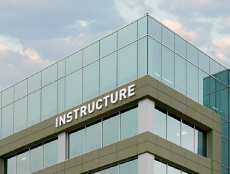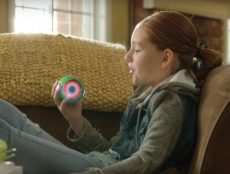
Articles
Op-Ed
2021 Is the Year to Accelerate a Whole-Child Approach to Learning
By Anastasia Betts
February 10, 2021
With the extreme changes endured by families as a result of responses to the coronavirus pandemic, the emotional and social needs of children are more prominent than ever. As we move into the new year, traditional classrooms are still turned upside down, as academic progress and social stability continues to be a daily challenge for most children. Therefore, attending to several overlapping components of childhood, not just academics, will be essential to ensure that our children emerge through this unprecedented period healthy and resilient. With no clear end in sight for students in the U.S. fully returning to classrooms, at-home digital education programs can help children fill in learning gaps.
Taking a Whole-Child Approach to Education
Even before the pandemic, a few resourceful educators, community leaders, and families were adopting an emphasis on more social-emotional learning (SEL) through a focus on educating the “whole child.” Addressing the whole child means recognizing and developing social, emotional, and cognitive skills in parallel. Whole child educators value these three categories of learning and acknowledge the strong connections between them. As we look to 2021, a focus on the whole child is crucial. Why? Because simply following directions and earning good grades is not enough to thrive in the current environment of remote or semi-remote learning. In this moment, educators are called to guide children to tap into social, emotional, and cognitive tools to find motivation and to understand how to learn successfully.
https://twitter.com/EdRoundtables/status/1359036325836578817
Learning is a social act. Long before formal schooling, we learn by emulating the more knowledgeable others around us and gain emotional as well as cognitive benefits when we join in their behaviors. These rewards lead to motivation, a key ingredient in learning. Motivation can be cultivated through meaningful interactions with teachers, classmates, and even with content. Amid “social distancing,” these interactions, and their rewards, can be more difficult to orchestrate. Learning through a computer puts distance between learners and their teachers and peers, making it even more difficult to attend to the needs of the whole child.
Looking Beyond Academic Progress
When taking a whole-child approach to education, emotional development is more nuanced than being “happy” or “sad.” As we emerge from 2020, emotional development including self-awareness, self-management, and self-direction is an important component of whole-child instruction. Without these skills, the agency needed to successfully navigate a remote learning environment where teachers are not always able to tell students what to do, or to remind them to stay on task, is difficult at best. Furthermore, without the consistent contact with and input from classmates, cultivating critical social and relationship skills may lag behind, keeping learners from achieving important developmental milestones that are needed to ensure their healthy, successful participation later on in college, career, civics, and their personal lives.
A singular focus on cognitive growth as measured through academic subjects like math, language, and science does not ensure that children will somehow naturally acquire the competencies needed to be a successful learner, friend, or collaborator. However, a whole-child approach takes into account the many passions and interests of a learner. It focuses not on one or the other, but on both traditional learning outcomes and social-emotional growth. For example, during the pandemic many children and families have embarked on learning new skills around crafting, building, performing, and more. These extracurricular pursuits connect students to the act of learning in ways that purely academic learning does not. These experiences help students connect to varied skills, reasons, and ways to learn, while simultaneously providing rewards for learning—cognitive, social, and emotional.
Here are five strategies teachers can use to develop the whole child from a distance:
First things first. If a child’s basic needs—for safety, food, and shelter—aren’t being met, then academic outcomes are likely to be poor. During times of great turmoil, such as the one we are living through, educators should check in on the child’s mental health to find out what they need and then connect them to helpful community resources, before focusing on academics.
One-on-one time. Building affinity with students can be harder through a screen than in a classroom, and setting up time to e-meet individually is a great way to show you care, connect on a more meaningful level, and get to know the varied strengths and interests of your students.
Small groups for the win. Creating small group instruction gives children the chance to have social interaction. With just a few other students participating, children are more likely to keep the microphone on and chime in, speak with other students, and create or maintain friendships.
Shifting the focus. Education needs to change and be less about following instructions and more about empowering kids to be agents of their own learning who know how to be autonomous. Without the traditional structure of the school day, children don’t know what to do on their own, and teaching autonomy is no longer a “nice to have,” but absolutely essential to success.
Real experiences. Instead of inventing lessons that are more artificial, educators can have children learn through virtual experiences like museum “visits” and at-home hobbies that connect to tangible skills, such as how crocheting can teach counting and patterns.
Over the past year, it has become apparent that a classroom no longer needs to be a centrally located, physical space where all students come to learn. Rather, learning can take place wherever the children are, on individual, small group, and whole group levels. Though not ideal, remote virtual learning can afford us an opportunity to focus on the things that matter most – how to learn effectively – as opposed to what is to be learned. After all, if students know how to learn, there isn’t anything they can’t learn if they want to learn it. As we look to supporting the “whole adult” that students will become, growth in social, emotional, and cognitive skills becomes more important, and we no longer only seek college-readiness—we seek life-readiness.
Anastasia Betts is the VP of Curriculum Planning and Design at Age of Learning.
Featured Image: Hannah Tasker, Unsplash.









No Comments